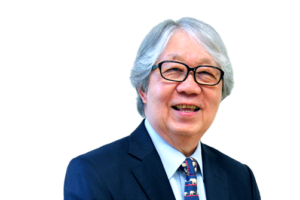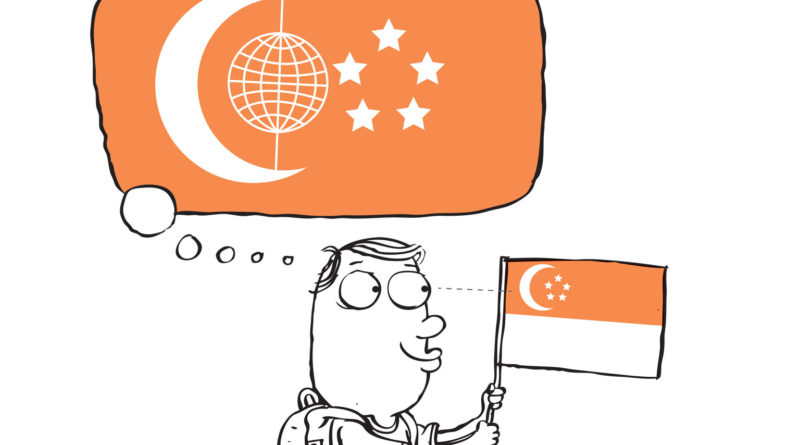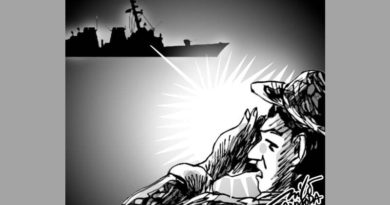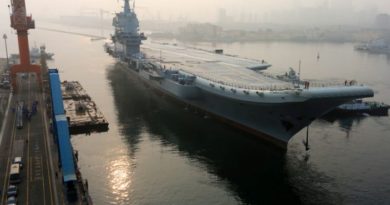VIEWPOINTS – OPINION: By Invitation – The world in Singapore: Tommy Koh | The Straits Times
 Tommy Koh
Tommy Koh
Ambassador-At-Large at Singapore’s Ministry of Foreign Affairs
The history of this island has been shaped by trade, and the contributions and values of the people drawn to it from near and far
In several of my previous essays, I discussed Singapore’s role in the world. In this essay, I want to focus on the opposite. I want to discuss how the world has shaped and influenced Singapore.
In their path-breaking 2009 book, Singapore A 700-Year History: From Early Emporium To World City, the three authors, Kwa Chong Guan, Derek Heng and Tan Tai Yong, have successfully rebutted the theory that the history of Singapore began in 1819.
They have given convincing proof that Singapore’s history actually began in the late 13th century. Based on archaeological excavations and other evidence, we now know that the island has been settled, off and on, for the past 700 years.
The reason which attracted people to settle in Singapore was trade. Singapore owed its existence to the role it played and continues to play as a free port and as an emporium for trade between China and India, between East and West and between South-east Asia and the world.
Trade is the life blood of Singapore. We must defend free trade and oppose protectionism in all its forms.
HEART OF SOUTH-EAST ASIA
My next inspiration comes from the Asian Civilisations Museum (ACM). I hope that every Singaporean will visit this museum. Why? Because it tells us who we are and where we came from.
The culture of Singapore is the synthesis and evolution of the civilisations of South-east Asia, China, India and Islam. The biggest gallery at ACM is on South-east Asia. Singapore is at the heart of South-east Asia. People from all over the region have settled here and become members of the Singapore family. In addition to the Malays, we have Banjarese, Baweanese, Bugis, Javanese, Sundanese, Minangkabaus and Acehnese.
The region has influenced Singapore, ethnically, linguistically and culturally. For example, our emphasis on cooperation and consensus is similar to the concepts of musyawarah and mufakat (consultation and consensus in Bahasa Indonesia). We should encourage Singaporeans to be more interested in our region and to become more knowledgeable about the region’s peoples, history, heritage and culture. I would politely remind Singaporeans that we are destined to live in South-east Asia till the end of time.
ANCESTRAL ROOTS
The museum has a new gallery on China. Singaporeans of all ethnicities should visit this gallery and learn about the history, heritage and culture of China.
China is the ancestral home of 76 per cent of our population. China is on the rise and is on a trajectory to become a superpower by mid-century. China has influenced and will always influence Singapore.
The important point which Singaporean Chinese should remember is that China and Singapore are two separate countries and, despite the goodwill which exists between them, they may sometimes have divergent interests.
The museum has an excellent gallery on South Asia, focusing primarily on India. The ancestors of many Singaporeans came from India and the other countries of South Asia. The region has influenced Singapore’s languages, religions, food, music, dance and literature. I would urge our Chinese and Malay compatriots to visit this gallery.
India is also on the rise and the economic and business links between us will continue to grow. It is, therefore, very important for young Singaporeans of all races to visit India and to enjoy its vibrant and colourful civilisation. The bottom line is that you won’t be successful doing business in India if you do not know India and do not like India.
ISLAM AND THE WEST
There is also gallery on Islam. Islam is a religion and not a region. So why do we have a gallery on Islam? I think the reason is there is a lot of ignorance and prejudice about Islam. It is, therefore, desirable for Singaporeans of all faiths to have an accurate understanding of Islam.
There are more Muslims in South-east Asia than in Arabia. Islam in South-east Asia has traditionally been tolerant and not exclusive. Also, in South-east Asia, unlike some other parts of the world, there are no sectarian conflicts between the Sunnis and the Shi’ites or between the Sunnis and the Sufis. Let us try to prevent people with political agendas from hijacking Islam to serve their political objectives.
There is one other civilisation which has influenced us and which is not represented at the museum, namely, the British version of Western civilisation.
Singapore was ruled by the British from 1819 to 1963, a period of 144 years. The British civilisation is part of the larger family of Western civilisation. The colonial experience has exerted the biggest influence on Singapore and Singaporeans. Let me cite a few examples.
The British gave us the English language. English has replaced Malay as the lingua franca of Singaporeans. Through the language, we are linked to the vast community of English-speaking countries and peoples. English has also become the language of commerce and diplomacy. Speaking English proficiently has become one of Singapore’s comparative advantages.
Another thing which Singapore has learnt from the West is the concept of modernity and the value of science and technology. The concept of modernity has enabled us to abandon such feudal concepts and practices as nepotism, the inferior status of women, the offer of gifts to persons in authority, and so on.
The embrace of science and technology and of engineering and mathematics has helped to propel Singapore’s progress in the past 52 years. The West has also taught us to respect and value the humanities and the social sciences. Going forward, Singapore should aspire to excel in both the sciences and the humanities.
One of the most important things we have learnt from the West is the concept of the rule of law. The idea that all persons are equal before the law and that no one is above the law is a revolutionary concept. The ideal of an independent judiciary and that all persons, rich and poor, will have equal access to justice are powerful ideas.
At the international level, we also support the international rule of law. All countries are bound by international law and disputes between states should be settled peacefully and in accordance with international law.
In 2006, the annual meetings of the International Monetary Fund and the World Bank Group were held in Singapore. I was asked by the Singapore Government to work with those two institutions in organising the programme of seminars, which was held alongside the official meetings. The theme was: Singapore In The World and the World In Singapore.
In this essay, I hope I have succeeded in demonstrating how the world has influenced and shaped Singapore.
• The writer is Ambassador-at-Large in Singapore’s Ministry of Foreign Affairs and a professor of law at the National University of Singapore.
.
STRAITS TIMES | PUBLISHED 0500 HOUR
.
NOTE : All photographs, news, editorials, opinions, information, data, others have been taken from the Internet ..aseanews.net | [email protected] |
For comments, Email to :
D’Equalizer | [email protected] | Contributor









